December 2011
On the 12th the regular Plymouth University group finally finished cutting back bramble from North Park.
A couple of days later a Conservation Team Work Party spent some much-needed time in the orchard. The plastic tree guards that had become brittle in the two years they’ve been in service were taken off and disposed of. The weeds growing through the weed-suppressing mulch around the base of the trees were also removed and the stays, ties and mesh tree guards were adjusted ready for another growing season. The only thing to do now is to re-mulch around the trees once it’s dried up a bit and we can get the mulch transported to the orchard.
The only time the temperature dropped to below freezing was in the early hours of the 10th with -1.1o C. The strongest gust of wind was recorded on the 12th at 35mph, with 34mph on 13th.
Four Bullfinches (3 males and a female) were outside the office this morning, unusually taking advantage of the sunflower seed on the bird tables.
LLP Forde Orchard Hedgebank Creation
November 2011
A Conservation Team Work Party cut back encroaching vegetation from around the ponds for the first time since their renovation in spring 2010.
A flock of over 200 pigeons flew over the field heading North East on the 6th, later in the day several groups of up to 50 pigeons were also seen flying over, heading in the same direction.
The second Advanced Barn Owl Surveying and Mitigation (ABOSM) course went ahead in the new Meeting Room on the 10th. Habitat management is covered during the day with a site visit to the LLP. During this visit, attendees saw a Blue Tit come out of a low hole on the east facing side of our wildlife tower as it was getting dark. This bird was presumably either feeding on invertebrates or going to roost. A Kestrel, Buzzard and Mistle Thrush were also recorded. A number of Field Vole holes were surveyed and counted on the slope just above the office.
Parasol mushrooms continue to appear in the grassland, the longest season we can remember. The Holly berries are fantastic and providing food for the Redwings passing through; if it’s anything like last year they will all be gone before Christmas. The Blackthorn on the north eastern side of the field, where the hedge has been allowed to grow out into the pasture, has produced the most incredible crop of Sloes this year.
The week commencing the 21st was volunteer week. Our regular Plymouth University conservation volunteer group cut back bramble and gorse encroachment from the upper side of North Park hedgerow, whilst on the 23rd-25th a group of volunteers from the Hungarian Barn Owl Foundation did more scrub control in Corner Wood, having received a couple of presentations about the LLP, the Barn Owl Trust and its work. This was the first group of Hungarians to visit, with another group due in February.
The highest temperature occurred on the 3rd with 15.3o C., the lowest 2.7 o C. and the mean an amazing 11.2 o C. Rainfall totalled 59.2mm.
October 2011
As the fine weather continued, much of Forde Orchard was also cut with the mower.
Nine cattle returned to the field having come up clear on their TB testing. On the 5th, whilst cleaning out the small bird boxes ready for next year’s breeding season, a bat was discovered roosting in one of the tit boxes on a large dead tree. A hasty retreat was beaten and the bat was left undisturbed. It was about the size of a man’s thumb, brown and furry and was considered most likely to have been a Pipistrelle.
A day later, some more bat provision enhancement measures were undertaken in the wildlife tower, with the erection of some bat boxes. Some Hessian sacks were also hung up for crevice dwellers.
Three juvenile Barn Owls that had come in as casualties earlier in the year were released from their aviary on the evening of the 1st. One was found roosting in the wildlife tower on the 6th.
On the 9th we had stunning views of a Kestrel hunting over the field above the wildlife tower – after an entrancing display it headed off to sit on top of the telegraph pole at the top of the field.
A planning application for a 10kWp solar PV system in the field by the barn was submitted to Dartmoor National Park Authority at the beginning of the month. It is hoped that consent will result in a significantly reduced carbon footprint and greater sustainability for the Trust’s energy requirements.
The cattle were shut in Kiln Close for a week around the middle of the month, and were eventually removed at the end of the month as scheduled, having done a good job, as usual.
Huge quantities of Holly, Sloe and Hawthorne berries are in the hedges, with more parasol mushrooms still coming up all over the field.
Of interest outside the LLP, a Short-eared Owl was brought in to the Trust with a wing injury and is currently being rehabilitated, although whether it will ultimately be releasable is still unknown.
A Kingfisher was still around the ponds in late October, with one seen flying off the island in the Flo (big) pond on the 25th.
The first Plymouth University student volunteering group visited on the 31st and set about clearing scrub behind Forde Orchard hedgebank.
Pictures of Long and Short-eared Owls
September 2011
Our annual grazing regime consists of 11 bullocks this year, and for the most part they have the run of the LLP with the exception of the orchard and ponds, and Corner Wood (for obvious reasons!). However, every now and again we like to ensure that all the field benefits from the grazing by shutting them into particular areas. On the first of September the cattle were shut into North Park. With access to water from the Ashburn, they did a good job, so were let out again after only 5 days. They will no doubt be encouraged to spend time in Kiln Close before they disappear at the end of October.
A Conservation Team Work Party on the 7th, tackled scrub around the Forde Orchard stone-faced hedgebank and then began the difficult job of cutting the alder saplings back from immediately around the pond. This is essential work to protect the integrity of the pond as, being clay-lined, the trees would eventually cause leaks by the spreading of injurious roots. Being on a steep slope, it can only be done by hand but after a couple of hours good progress was made, although a bit more time will be required to finish the job later this winter.
Pressure of other work this year has meant that topping of invasive species such as thistles, docks and nettles hasn’t been done as much as we would like and probably means extra work next year to get back on top of them. The up side of this is more seeds for over wintering birds.
Winter work is being planned and includes clearing encroaching scrub in Corner Wood to allow the Bluebells to come up next year and some cutting back of internal hedges. If you would like to get involved in practical tasks in the LLP contact the conservation team for dates and details.
The big news from the LLP was the sighting, albeit fleeting, of a Wryneck along the fenceline in Kiln Close on the 9th. It was accidentally flushed from the ground and flew straight up into the hedge, where it paused briefly before disappearing. A member of the Picidae family, (Wryneck and Woodpeckers), Wrynecks feed predominantly on ants and therefore spend much of their time in terrestrial habitats than other woodpeckers, save perhaps the Green. They are a scarce but regular visitor to the British Isles from Europe.
Remedial enhancement works commenced on the bat provision in the wildlife tower at the end of the month, with the maternity roost (in the top part of the building) receiving added insulation and draught exclusion measures to make it more attractive.
A Kingfisher heard calling around the ponds on the 29th again gave impetus to the artificial Kingfisher/Sand Martin bank idea, with several further sightings around the Flo pond into October.
During a period of fine weather at the month’s end the difficult slope at Corner Wood was finally cut with the brushmower. Our first Crab Apples have appeared on two trees in the hedgerows of Kiln close.
The cattle were removed for a few days at the end of the month for their TB testing.
August 2011
Week 18 of the UK Butterfly Monitoring Scheme on the 2nd revealed 50 Gatekeeper, 98 Meadow Brown and 1 Wall Brown.
A day later, a C. T. Work Party pulled invasive species, including Himalayan Balsam and Creeping Thistle, our hard work being rewarded with views of a Kestrel on the tall telegraph pole. An ‘unkindness’ of six Ravens overhead at about 4pm were kind enough to put us onto the arrival of a thermalling juvenile Hobby which slowly drifted off south after some minutes.
The Butterfly Walk and Talk held on the 6th benefited from warm, sunny conditions and reported good numbers of Gatekeepers, Common Blues and Silver-washed Fritillaries. An eagle-eyed visitor spotted one of our orchard apple trees covered in beautiful rosy-red apples!
The annual grazing regime started on the 16th August, when 11 bullocks were brought in. They will stay on site until the end of October.
A pipit which was flushed from grass above North Park on the 11th, flew into North Park hedge but didn’t call and was most probably a Tree Pipit.
By the 25th August, the wet weather had blocked all attempts at us getting out with ‘the Beast’ to cut the scrub on the slope at Corner Wood.
LLP Forde Orchard Hedgebank Creation 2008
July 2011
The month began with a hint of what was to come, in the form of about a dozen Marbled White on the slope behind the barn, accompanied by a couple of Meadow Brown and several Skippers.
Three days later, a record-breaking 189 Marbled White were recorded during Week 14 of the UKBMS butterfly transects, with dozens literally coming up in clouds at the surveyor’s feet. Also recorded were 120 Meadow Brown, 29 Ringlet, 26 Small Skipper and 6 Small Tortoiseshell. On the same day, a Grey Heron and a Kestrel were also recorded overhead.
On the 6th, the bracken pulling experiment continued on the slope behind the barn during the monthly C. T. Work Party. A couple of dustbins with mesh lids were filled with water and put in the wildlife tower to increase humidity, which should make it more attractive to cavity-dwelling bat species.
The morning of the 7th saw a group of 15 from the West Somerset Wildlife Trust joining us for a late morning guided walk and were rewarded with good weather and large numbers of butterflies.
On the 14th, a Kingfisher was seen briefly sitting on the big pond island, before flying off downstream. It had apparently been first seen on the river a couple of days earlier and is probably a dispersing juvenile from a nearby brood. Week 15 of the UKBMS revealed 14 Small Skipper, 26 Large Skipper, 6 Large White, 5 Small Copper, 12 Small Tortoiseshell, 92 Marbled White, 113 Meadow Brown, 18 Ringlet and 1 Small Heath.
The bracken in Kiln Close was mechanically topped on the 19th.
The LLP’s first Skylark was seen on the airstrip on the 23rd, and was most probably a dispersing juvenile from nearby.
After a trip out with the Conservation Team on the 26th to ring young Barn Owls, Julia Clark, a licensed bat worker, was asked if she would check the wildlife tower bat provisions to advise on how to enhance these spaces for bats. Much to our surprise she found bat droppings on the floor of the 1st storey in an area not specifically designed for bats and after collecting some to have a better look with colleagues later suggested they were most likely to be from a Lesser horseshoe which may have been using the area as a feeding perch. There were many more droppings on the floor but no obvious evidence in the various dedicated provisions (typical!).
June 2011
In the first week of June, the orchard seemed to have the lion’s share of the prolific numbers of Ladybird larvae that have appeared throughout the LLP; mostly 7-spot Ladybird but also some Harlequin.
On the 6th, another Small Heath was reported in Forde Orchard (3rd record), and the first of the year’s Meadow Browns appeared during Week 10. By the 15th, the first 3 Marbled White also put in an appearance.
The 3rd and the 4th saw average temperatures of over 19 °c (33.9°c in the sun) but most days have been well below usual for the time of year. The much needed rain arrived on the 12th when we had 30.8 mm, more than the total for May.
During the week of the 12th unusually a flock 20+ gulls was seen wheeling over the field, they appeared to be feeding over the path but it wasn’t clear what they were eating, they reappeared on the 19th.
On the 18th a young badger was seen at dusk, it appears to have been feeding on neighbouring free-range guinea pigs.
By the weekend of the 18th there were ladybirds almost everywhere you looked in the orchard and the first ripe cherry was seen on one of the trees.
The ponds have naturalised beautifully after all the remedial works done last year.
A small fish, probably a Brown Trout, was seen in a pool in the River Ashburn from Riverbank Walk on the 21st.
We were lucky that it stayed dry for the dozen or so people that attended out midsummer evening walk on the 22nd and again on the 23rd when we had a Mid Devon Natural History group here for an afternoon LLP talk and guided walk. Both events were a great success and enjoyed by all attendees.
On the 26th, a presumed juvenile Dipper was in the Ashburn just above the ponds before flying upstream.
A summary of the weather records accumulated for the site show a significantly cooler than average June with more rain on more days and more wind than usual – certainly not a blazing June here!
| June LLP | Rainfall (mm) | Rain (days) | Mean temp (C) | Max temp (C) | Min temp (C) | Mean wind (mph) |
| 2007 | 138.4 | 20 | 14.3 | 21.0 | 6.7 | 2.7 |
| 2008 | 48.2 | 17 | 14.0 | 23.6 | 5.3 | 3.8 |
| 2009 | 29.2 | 12 | 14.4 | 24.2 | 4.5 | 2.3 |
| 2010 | 26.0 | 6 | 15.4 | 25.4 | 6.8 | 2.9 |
| 2011 | 79.7 | 21 | 13.5 | 25.4 | 4.8 | 3.1 |
May 2011
The month began with a Barn Owl flying around screeching up the valley then over the field on the evening of the 2nd. In the River Ashburn, what are thought to have been several Brown Trout were seen, with one jumping for May Flies.
On the 9th, Dr. David Fee of Ambios Ecology visited to set up a remote Anabat bat detector in Forde Orchard hedgebank adjacent to the new wildlife tower, which recorded all species of bat moving along the hedgerow. In only 2 nights the following species were recorded and it is hoped that a few more will be added when he returns for another go in June;
Greater horseshoe, Lesser horseshoe, Common pipistrelle, Soprano pipistrelle, A Myotis species, Long-eared bat and Noctule
A day later, a longhorn beetle Rhagium bifasciatum was on the window ledge of the Conservation office window, taking the total of Longhorn beetle species at Waterleat to 3! At lunchtime, the small bird boxes were checked and several early broods of Blue Tits were noted, with several more females incubating.
A field Vole nest with 3+ small young was found under one of the sheets of corrugated iron and up to three Wood Mice and a Field Vole were seen regularly under another. A Conservation Team Work Party on the 11th pulled docks and creeping thistle from the top of the field. A Pheasant with 6 poults was flushed from the grass, and several Buzzards and a Kestrel were hunting on and off throughout the day. Two Field Voles were seen crossing one of the many vole holes.
Thirty House Martins were feeding over the field on the 12th, with 20 Swallows there a day later.
The LLP’s first records of Pearl-bordered Fritillary this year involved 2 individuals by the hospital release aviary just outside Kiln Close on the 20th. These were followed closely on the 24th by another first for the LLP, a Green Hairstreak, which showed well albeit briefly in the same general area. Meanwhile, a Dingy Skipper was recorded in Kiln Close on the same day.
On the evening of the 22nd, a Nightjar was heard churring to the north of the LLP, from the direction of the Larch plantation, while a Barn Owl screeched overhead. On the 24th, the resident Kestrel was seen foraging and making a successful kill, which it consumed before returning to foraging.
By the end of the month, some 50 Swifts were hawking over the LLP. Another Dingy Skipper, two Wall Brown (4th and 5th LLP records) and a Small Heath (2nd record) were noted during Week 9 of the UKBMS butterfly transects. The ponds have naturalised incredibly quickly and attracted Common Blue, Azure and Large Red Damselfly, and lots of Broad-bodied Chasers.
Plants in flower by the end of the month included Lesser Stitchwort, Autumn Hawkbit and Musk Thistle. Grass growth has been affected by the low rainfall this year and in some areas of the field the litter layer is still visible and we have seen dieback on areas of shallow soil.
After a warm dry April the month was cool, overcast and windy with some rain on 18 days although the rainfall recorded in the month was lower than average at just 26.1mm. There was a mean temperature of 11.5°c and the highest temperature recorded 18.3°c.
| May LLP | Rainfall (mm) | Days with rain | Mean temp (C) | Max temp (C) | Min temp (C) | Mean wind (mph) |
| 2006 | 135.8 | 21 | 11.5 | 19.5 | 3.4 | 3.9 |
| 2007 | 128.4 | 19 | 12.2 | 22.6 | 2.9 | 3.9 |
| 2008 | 142.0 | 18 | 12.9 | 24.8 | 4.8 | 2.5 |
| 2009 | 38.0 | 13 | 11.5 | 22.4 | 3.4 | 3.4 |
| 2010 | 33.2 | 15 | 11.0 | 25.4 | 1.5 | 2.8 |
| 2011 | 26.1 | 18 | 11.5 | 18.3 | 3.3 | 3.2 |
April 2011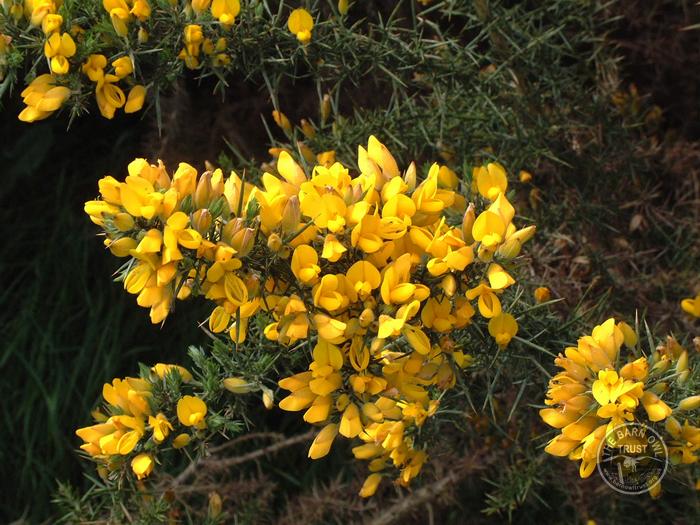
During the first week of our annual UK Butterfly Monitoring Scheme transect walk on the 6th, a sulphur-yellow male Brimstone put in a welcome appearance, along with 3 male Orange-tip, 3 Peacock, 4 Small Tortoiseshell and a Large White. Half a dozen Chiffchaff and the same number of Blackcap were in song in the hedgerows, and the pair of Mandarin were in the Ashburn again below the lower bridge. They reappeared on the 10th and have not been seen again but may turn up in the future.
Week 2 of the butterfly transect yielded a Green-veined White in addition to similar numbers and species as Week 1. Two Swallows were vocal over North Park and a Tree Pipit was making use of the rough grass in Kiln Close.
A Barn Owl was heard repeatedly calling whilst flying over the field at dusk on 9th.
A Conservation Team Work Party on the 13th weeded and re-mulched around the fruit trees in the orchard, all of which have survived and are looking healthy. The cherries are coming into flower and looking glorious and the apples and plums have lots of new growth. A small crop of apples is expected as the trees will be feathered maidens this year (2 years old). A Swallow was seen over the pond in the afternoon.
Greater Stitchwort, Pink Campion, Gorse, Herb Robert and Bluebells were all in flower by mid-month and vast numbers of sunny yellow Dandelion flowers highlighted the paths where the grass is overdue for cutting. Both of the ponds were teeming with tadpoles and newts are being spotted regularly.
Two Tree Pipits were in the rough grass on the 18th, and a pair of Sparrowhawk were hunting the hedgrows along the road.
On the 26th, a longhorn beetle Rhagium mordax was on the post of the bird feeder outside the Conservation office and a Common Lizard was under the bird feeder outside the Admin office. This represents the 5th record of Common Lizard for Waterleat, all roughly in the same general area and all in April, with no sightings at any other time of the year.
Also the same day, 3 Red Admiral, 6 Peacock, 3 Speckled Wood, 3 Large Skipper, 2 Brimstone, 2 Large White, 1 Orange Tip, 9 Green-veined White, 7 Small White and 1 Holly Blue were recorded during Week 4 of the UKBMS butterfly transects. Other fauna included Wood Ant Formica rufa, Sloe bug Dolycoris baccarum, mating Green Tiger beetles, 1000s of St Marks fly Bibio marci, 1 Wood Mouse, 2 Field Vole and several Large Red Damselfly Pyrrhosoma nymphula. Flora included Bulbous Buttercup, Creeping Buttercup, Common Mouse-ear, Germander Speedwell, Pink Campion, Garlic Mustard, Lesser Stitchwort, Winter-cress, Crosswort, Common Sorrel, Bluebell, Ribwort Plantain and Sweet Vernal grass.
The first Cuckoo for several years was seen and heard in the Holly hedge, before flying out over the field.
LLP pictures of flowers and grasses
March 2011
On the 3rd, the slope by Corner Wood was cut with the Field and Brush Mower before the spring flowers appear. The bramble had hardly grown at all and, as a result, this was done in record time and with the minimum of effort. During some minor maintenance work to the orchard tree guards, a Red Admiral and 2 Small Tortoiseshells were recorded, reminding us that the butterfly transects which start in April would soon be upon us.
One the 10th, a Peregrine, 2 Sparrowhawks and half a dozen Buzzards were making use of the thermals that developed in the sunny, still conditions.
By the 16th, and in glorious weather, the first Chiffchaff was seen in Oaks outside the office, and another later heard singing along the lane hedge. Two Small Tortoisehells, a Peacock and the first Brimstone of the year were also seen. Spring flowers include celandine, primrose, dog violet and wild strawberry.
In the morning, a CT Work Party tackled more scrub along the remnant hedge and removed a fallen tree from the lane hedge. In the afternoon, an LLP vole hole survey was conducted in the LLP’s rough grassland, with a mown strip nearby as a control. A transect line of 50m. was pegged out and 1m square quadrats were used to count all visible vole holes more than 10cm apart. Not one hole was found in the cut sward. In comparison however, 34 out of 50 quadrats recorded vole activity, the maximum being 12 separate vole holes! The average was 2.46 vole holes per 1m square from all 50 quadrats measured.
Lots of Buzzard activity was recorded in the fine, sunny, warm weather, as a Green Woodpecker yaffled in the background and a Great Spotted Woodpecker drummed in the distance.
On the 29th, in the early evening, a pair of Mandarin Ducks were seen on the pond.
February 2011
The male House Sparrow was still in song outside the aviaries on the 2nd and was back again checking out the nestbox outside the office on the 3rd, this time with a female in tow. By mid-month, at least two pairs, and possibly up to three males, were seen entering the small bird holes in the LLP barn, raising hopes of the LLP’s first ever House Sparrow breeding attempt. The Dipper boxes were erected underneath the Riverbank Walk bridges.
On the 4th, David Fee from Ambios Ecology visited to advise on enhancements to the bat provision in the wildlife tower. He promised to return in the spring with a remote bat sensor, which will tell us exactly what species we have on site and therefore what measures to take. Also on the 4th, the first frogspawn was noticed around the edge of the Flo pond in Forde Orchard, some 5 days earlier than last year. By the 11th, this had grown dramatically coating the riverside bank, with a significant amount also in the Oakley pond.
Some brand new small bird nestboxes were erected in trees along the length of Riverbank Walk on the 18th, with two older boxes being replaced. The first primrose of the year was also seen in the Pennsland lane hedge on the 18th.
On the 19th a Buzzard was seen perched on the roof of the wildlife tower and numerous small bird droppings were visible on one of the back gable end timbers.
The orchard continues to mature, with all the trees doing well and the exciting prospect of our first proper crop of apples this coming summer.
The Plymouth University volunteer group came on the 23rd and cleared more scrub from the hedgebanks, and helped move the last of the rocks to around the base of the wildlife tower. In the Flo pond at least 6 newts were counted around the periphery of the mass of frogspawn
LLP Forde Orchard Hedgebank Creation 2008
January 2011
The month began with a female Sparrowhawk flying up the roadside hedge in the afternoon.
A large number of vole holes are appearing around the field suggesting good vole activity despite the freezing temperatures.
On the 11th, a Conservation Team Work Party bagged up the wood chippings that were left after the tree work conducted at the site of the new Meeting Room. These eleven bags of chip can be used in any of the aviaries on site, on the LLP paths or in the orchard as mulch for the trees and will save the Trust some expense.
A Grey Heron is being seen regularly on the river Ashburn and hunted outside the office on the 14th whilst a female Siskin visited the bird table.
Clear evenings on the 18th and 19th provided wonderful views of a huge full moon rising in the east and allowed the overnight temperatures to drop and cover the valley in a thick white frost. Unfortunately the weather station is on the blink and away for repair so we have a hole in our recorded data.
The 21st heralded the start of a prolonged run of House Sparrow sightings around the LLP barn and BOT office, with a male checking out the nestbox outside the office for a few minutes. On the 27th, it or another was going into one of the small bird holes in the barn, whilst on the 28th a male was in song in a nearby hedge.
On the 24th, some crown feathers from a male Goldcrest were found underneath a post along by the Ashburn, the result of a Sparrowhawk kill no doubt.
The bridges were measured up for Dipper nestboxes, which will be fitted early next month.
- Wildlife Diary 2023
- Wildlife Diary 2022
- Wildlife Diary 2021
- Wildlife Diary 2020
- Wildlife Diary 2019
- Wildlife Diary 2018
- Wildlife Diary 2017
- Wildlife Diary 2016
- Wildlife Diary 2015
- Wildlife Diary 2014
- Wildlife Diary 2013
- Wildlife Diary 2012
- Wildlife Diary 2011
- Wildlife Diary 2010
- Wildlife Diary 2009
- Wildlife Diary 2008
- Wildlife Diary 2007
- About our Wildlife Diary
- About the LLP wildlife haven






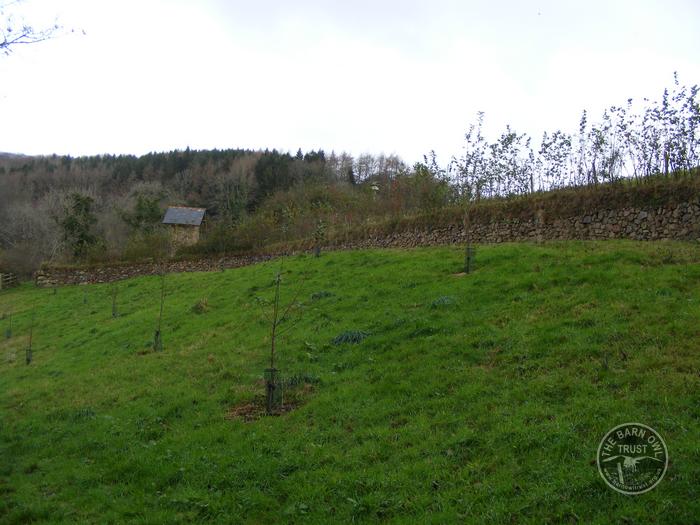

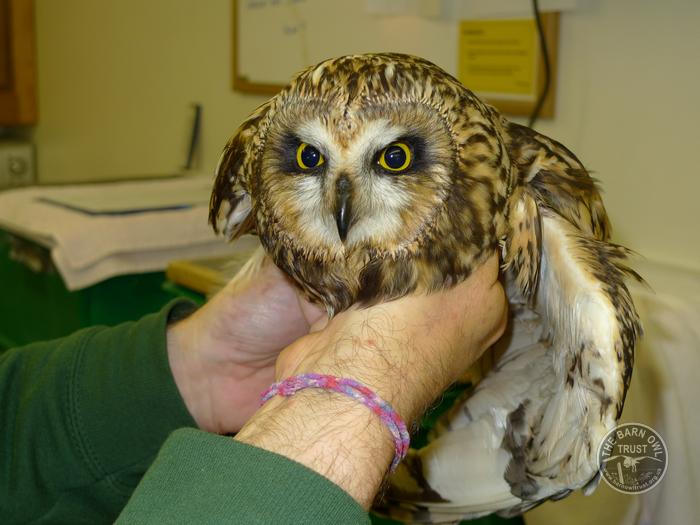
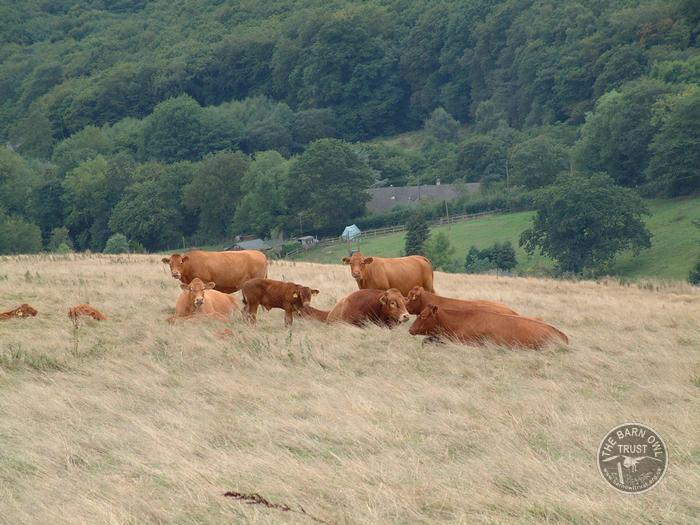
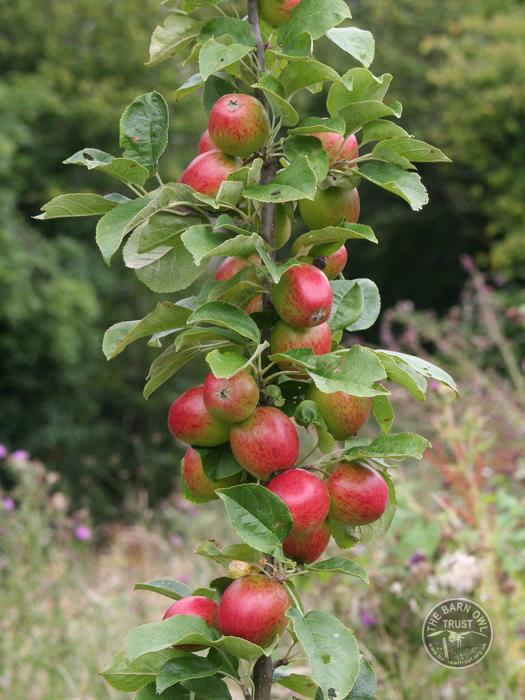





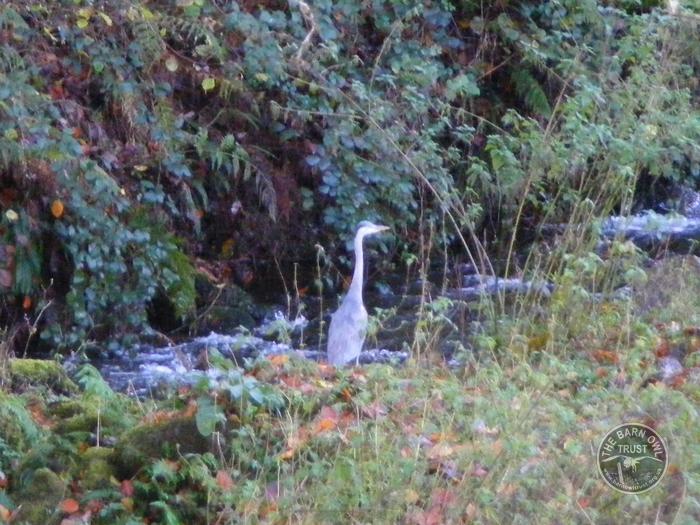

Comments are closed.